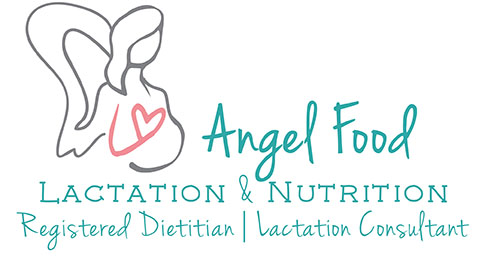From a gassy gut to red inflamed skin, breastfeeding moms often question the influence of their diet on behavior and symptoms in their little one. There’s no denying the influx of food sensitivities and allergies in children and adults, but what about the smallest members of our society? In my practice, I see many families who have infants showing signs of food intolerance, often times leading to symptoms such as eczema, bloody stools, sleeplessness, reflux, digestive discomfort from gassiness, abdominal pressure, and the infamous mucus-filled stool. “Is it something I ate?” mom asks. “Is it a virus or bacterial infection?” “Where did this come from? She was fine a week ago!” The world of food sensitivities is vast and perplexing, yet we are beginning to find our way as we learn more and more from our families each day. Over the next few months, I will be sharing a little insight into theories of why we are seeing this influx, how babies receive components of mom’s diet in her milk, and what we can do about it.
What’s With The Influx??
There are many theories aiming to define the cause of food allergies, however none have been proven as fact. Some include the hygiene hypothesis, the dietary fat hypothesis, antioxidant hypothesis, and the vitamin D hypothesis. The hygiene hypothesis discusses our hygiene habits, from our current water system to the use of cleaners and hand sanitizers & soaps. This may contribute to the lack of exposure to pathogens (germs) and therefore suppressing the development of our immune system possibly leading to a greater risk of allergies and sensitivities. The fat hypothesis, vitamin D hypothesis, and antioxidant hypothesis dive further into our dietary intake and focus on quantities of healthy fat consumption and fresh fruit/vegetable intake as compared to a diet consuming highly processed foods, lacking key nutrients that are necessary for optimal functioning of the body. Regardless of the exact cause, we know the increase in food sensitivities is real.
Maternal and Infant Immunity
Mothers and babies, although becoming two at birth, are still incredibly connected in their need for one another. In pregnancy, mom begins to share healthy bacteria, or micro-biota, and immune boosting antibodies to her baby en utero. That’s right, before she is even exposed to her new environment! Mom’s amniotic fluid contains these bacterial warriors specifically made for her baby as she learns what she will need to survive in her future environment. As she initiates her swallowing reflex, practicing for her big job of feeding, she begins to lay down the start of her future microbiome. Once baby is earth-side, she relies on her mother’s breast milk to continue this amazing level of immune support as she slowly becomes dependent on her own body to provide protection.
How does one establish immunity you ask? Mom absorbs something called antigens, or substances that stimulate the production of antibodies from her environment by way of her digestive system and through her nose, mouth, and respiratory system, etc. This creates antibodies to help her fight off any offending bugs or substances that may harm the body. When a mom is breastfeeding, she passes these antibodies on to her baby. Through her breast milk, she offers immunity toward anything that may be harmful in their specific environment. This explains how mom can get sick, but baby remains healthy or contracts a much smaller version of the illness. Given that part of mom’s immunity is based on antigens present in her digestive system, it makes sense to imagine how food can cause the production of antibodies. This is especially true if she is sensitive or intolerant to a certain food. In turn, baby receives these antibodies from mom’s milk and responds to the food in a similar fashion.
How Do I Know If I Am Intolerant To Foods?
Many children and adults will become intolerant or sensitive to certain foods at multiple points in their life, however these sensitivities come and go with variability in its duration. The key signs of childhood or adult food intolerance are usually digestive or dermatological in nature. This includes diarrhea, constipation, excessive gas, abdominal pain/bloating, variability in stool appearance, and alterations in skin appearance such as eczema, rash, acne, etc. Many times, adults have experienced these symptoms for so long they are unaware of its presence or feel it is normal for their bodies. Treatments and medications may be chronically used, masking the underlying problem. Therefore, dietary modifications are not pursued, leaving the gut-wrenching effects of these ‘repeat offenders’ present in the body.
You may be thinking, “Yikes, that’s me!!” If so, congratulations! You have just identified the first step in removing or minimizing your digestive and/or skin related woes from your daily life. Better health is right around the corner for you and your baby… the next step is to determine what the offending food(s) might be. This process is most successful with daily self-reflection of dietary intake and physical symptoms. As always, seeking assistance from a Registered Dietitian specialized in food sensitivities will not only offer reliable, evidence-based information, but also help you navigate through your day-to-day life with new eating patterns!
As you work through the removal of offensive foods, of equal importance is achieving the optimal gut environment… Next month, we will discuss how food sensitivity alters the maternal and infant digestive system, ways to restore balance, and how mom’s digestion relates to breastfeeding. This is a fascinating concept; you won’t want to miss it!
